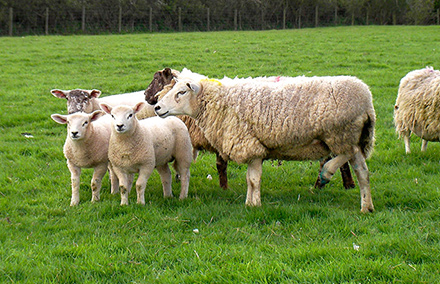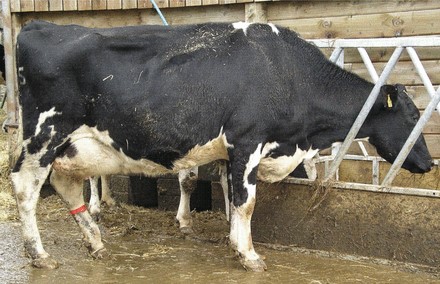Liverpool Livestock Lameness Group
Lameness in domesticated ruminants, including cattle, sheep and goats, both compromises farm animal welfare and threatens global food security.
Infectious causes of lameness, including Bovine Digital Dermatitis in cattle and Contagious Ovine Digital Dermatitis and Footrot in sheep, are responsible for a significant proportion of all-cause lameness in livestock, and remain one of the greatest unresolved challenges facing the modern farming industry. Lameness negatively impacts productivity and fertility and is therefore a major research priority. The Liverpool Livestock Lameness Group (LLLG), based at the University of Liverpool’s Leahurst campus, is primarily focused on undertaking research into the aetiology, epidemiology, management and prevention of infectious dermatological disorders of the foot in which lameness is the primary clinical feature.
Lameness in domesticated ruminants
Lameness is defined as an observable impairment of locomation and is currently the most significant factor affecting the welfare of domesticated ruminants in the UK, resulting most commonly from physical trauma, foreign body penetrations, horn overgrowth or infection. Lameness has a major impact on animal welfare, and associated pain and discomfort will frequently result in an abnormal gait and uneven weight-bearing of the limbs.
Lameness is a major cause of income loss to farmers, associated with the following:
- reduced milk yield (due to stress and an extended calving interval)
- loss of body weight (through impaired intake of feed)
- milk withdrawal (due to use of antibiotic treatments)
- poor fertility (including delayed ovarian cyclicity, irregular oestrus and conception failure)
- increased veterinary treatment costs
- increased risk of other diseases
- premature culling of severely affected/treatment-non-responsive animals.

Lameness in a sheep with CODD

Lameness in a dairy cow with BDD
Members
Prof. Stuart D. Carter Professor of Veterinary Pathology, Infection Biology
Prof. Jonathan Rushton Professor of Animal Health and Food System Economics (N8 Chair), Epidemiology and Population Health
Prof. Robert Smith Senior Lecturer, Livestock Health and Welfare
Dr. George Oikonomou Senior Lecturer, Livestock Health and Welfare
Helen Williams Senior Lecturer/Practice clinician, Livestock Health and Welfare
Dr. Helen Higgins Lecturer, Veterinary Education
Dr. Nicholas J. Evans Senior Lecturer, Infection Biology
Dr. Jennifer Duncan Senior Lecturer, Livestock Health and Welfare
Dr. Dai Grove-White Lecturer, Livestock Health and Welfare
Dr. Gareth J. Staton Research Associate, Infection Biology
Dr. Peers Davies Livestock Health and Welfare
Intan Noor Aina Kamaruzaman PhD Student, Infection Biology
Hayley Crosby-Durrani PhD Student, Infection Biology
Amy Gillespie PhD Student, Infection Biology
Contact
Liverpool Livestock Lameness Group
Leahurst Campus
Chester High Road
Neston, UK
CH64 7TE